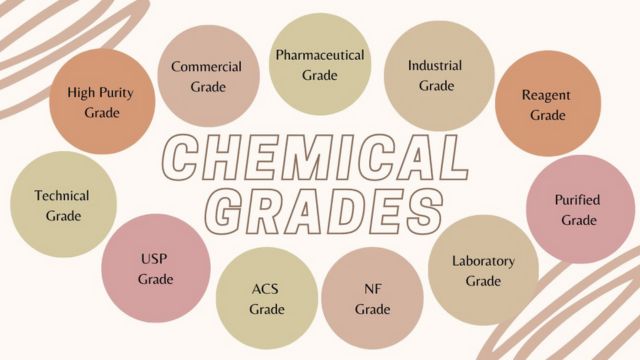Regarding medical-grade supplies, the phrase “medical grade” might be somewhat vague. Medical-grade items and materials, however, are especially meant to satisfy strict criteria of safety, dependability, and durability for usage in healthcare environments. Medical supply grades are categorised according to intended use, material quality, and degree of risk connected with their usage.
The several grades of medical supplies will be discussed in this article together with their meanings and ways of differentiation depending on their features and uses.
1. What Does “Medical Grade” Mean?
Let’s clarify the word “medical grade” before delving into the particular grades. Medical-grade materials are generally those produced, tested, and approved for use in medical contexts including hospitals, clinics, and surgical sites. To guarantee they satisfy safety criteria established by regulatory authorities including the FDA (Food and Drug Administration) in the United States, the European Medicines Agency (EMA) in Europe, or other pertinent agencies globally, these items are rigorously tested and certified.
Usually speaking, the word “medical grade” relates to the product’s safety elements and material quality. Clinics, surgeries, patient care, diagnostics, or even administrative healthcare environments could all find usage for these goods.
You may also like this: The Evolution of Medical Supplies: A Look Back at the Last Decade
2. Different Grades of Medical Supplies
Medical supplies have different classes depending on their usage and safety criteria. Let’s examine the primary groups:
Class I (Low Risk)
Considered low-risk items are Class I medical equipment. Usually non-invasive, these are the kinds of medical supplies that do not call for major regulatory control. Many times, Class I devices are created and sold with minimum compliance criteria and are subject to the least level of control.
Examples of Class I medical devices include:
- Bandages
- Examination gloves
- Non-sterile thermometers
- Crutches and walkers
Although these supplies are low-risk, they still need to meet basic safety and quality standards, ensuring they are safe for use in medical environments.
Class II (Moderate Risk)
Class II medical devices are considered moderate-risk products and usually demand for more thorough testing and regulatory compliance. These items either perform more important functions or are meant to be used in direct patient contact. Usually subject to 510(k) approval, Class II devices must prove they are at least as safe and effective as an already available product.
Examples of Class II devices include:
- Surgical masks
- Infusion pumps
- Diagnostic imaging equipment
- X-ray machines
Products in this category are commonly used in clinical settings, such as diagnostic labs, operating rooms, and outpatient facilities.
Class III (High Risk)
Class III medical devices are high-risk products needing the most thorough inspection. Many times, these tools are life-sustaining or vital for preserving patient health. Premarket approval (PMA) follows from more thorough testing, clinical trials, and documentation proving its safety and efficacy.
Class III devices find frequent use in life-support systems, surgical operations, and other vital healthcare uses. Even after they are cleared for use, they are under ongoing observation for their lifetime.
Examples of Class III medical devices include:
- Pacemakers
- Implantable prosthetics
- Heart valves
- Neurostimulators
Given their high-risk nature, these devices are subject to the most stringent quality controls, both during the manufacturing process and after they are released into the market.
Class IV (Most Critical Risk)
Some nations have a fourth category for critical-risk devices that transcend life support and can be applied for stem cell research, biological testing, or genetic material manipulation. These items need for the most strict regulatory control.
Examples of Class IV devices include:
- Gene therapy tools
- Certain diagnostic devices used for gene sequencing
This category is typically reserved for highly specialized and complex devices.
3. Factors Affecting the Grade of Medical Supplies
Several factors contribute to the classification of medical supplies into various grades, including:
- Risk level: How dangerous or potentially harmful is the device if it fails?
- Invasiveness: Does the product come into direct contact with a patient’s internal organs or blood?
- Duration of use: Will the device be used for a short procedure or be implanted for the long term?
- Critical nature of the device: Is the product essential to a patient’s survival, such as life support equipment?
Each of these factors influences how the product is tested, certified, and regulated. The higher the risk and the more critical the use, the higher the grade and stricter the requirements.
4. Why Understanding Medical-Grade Supplies Matters
Understanding the different grades of medical supplies is crucial for several reasons:
- Safety: Knowing the risk levels associated with different medical devices can help healthcare providers make informed decisions.
- Compliance: Healthcare facilities need to ensure that they are using devices that meet regulatory standards to avoid legal and financial risks.
- Patient Care: Choosing the appropriate class of device can be the difference between a successful procedure and complications. For example, using Class I products in high-risk surgeries can lead to serious consequences.
Read this too: Top Factors to Consider When Buying Medical Supplies Online Safely and Effectively
5. Conclusion
Whether you work in the medical field or as a customer, knowing the several levels of medical supplies will help you to make sure you are using the right tools for particular medical requirements. Choosing the right medical supplies for any particular scenario will help you to make better judgements by knowing the criteria of safety, risk levels, and product usage.
Stay Updated with the Latest in Medical Supplies and Clinical Engineering
At J&J Supplies, we are committed to providing high-quality medical supplies, clinical engineering tools, and healthcare solutions for various needs. Whether you’re looking for medical-grade gloves, sterilization equipment, or clinical devices, stay connected with us for the latest news, tips, and product insights. Check out our blog for more information and updates about the medical supplies industry!








